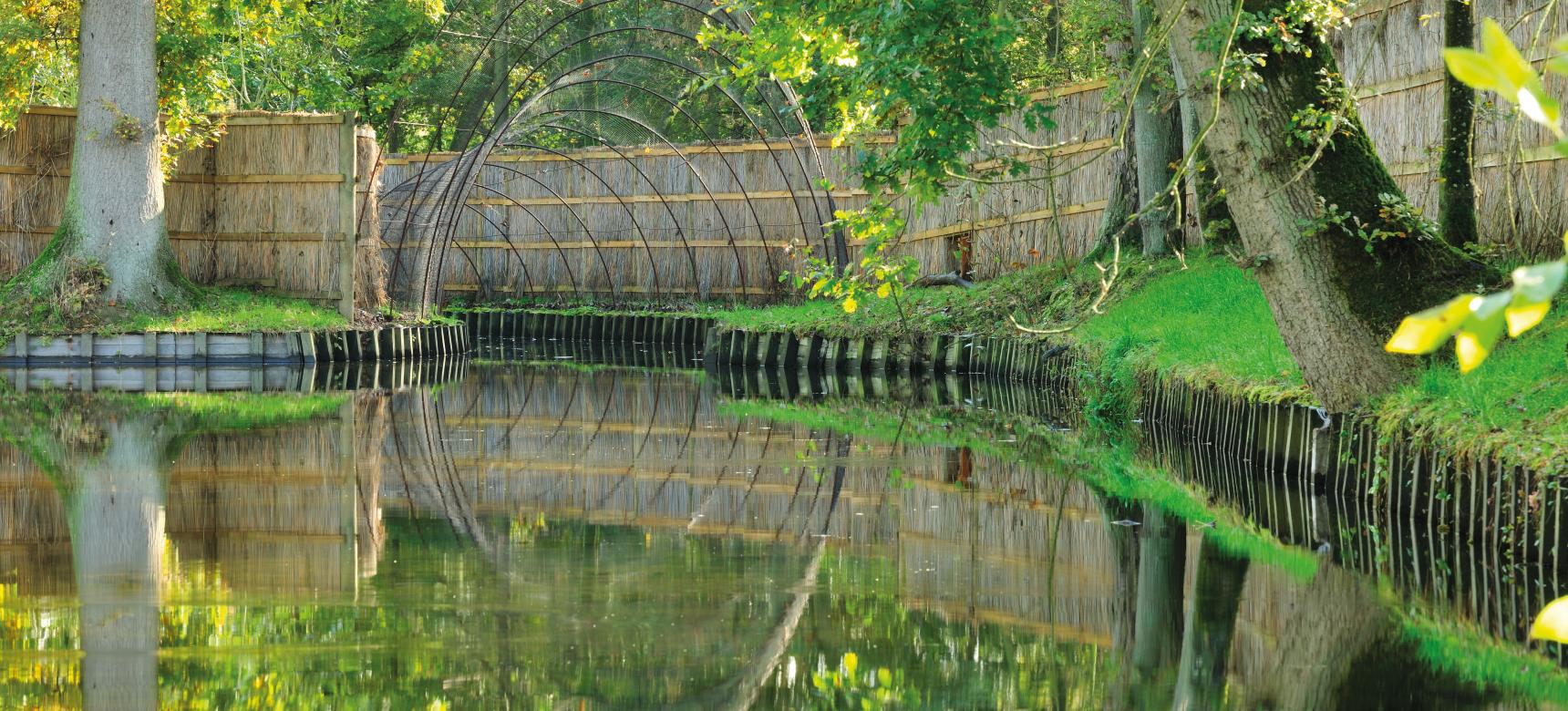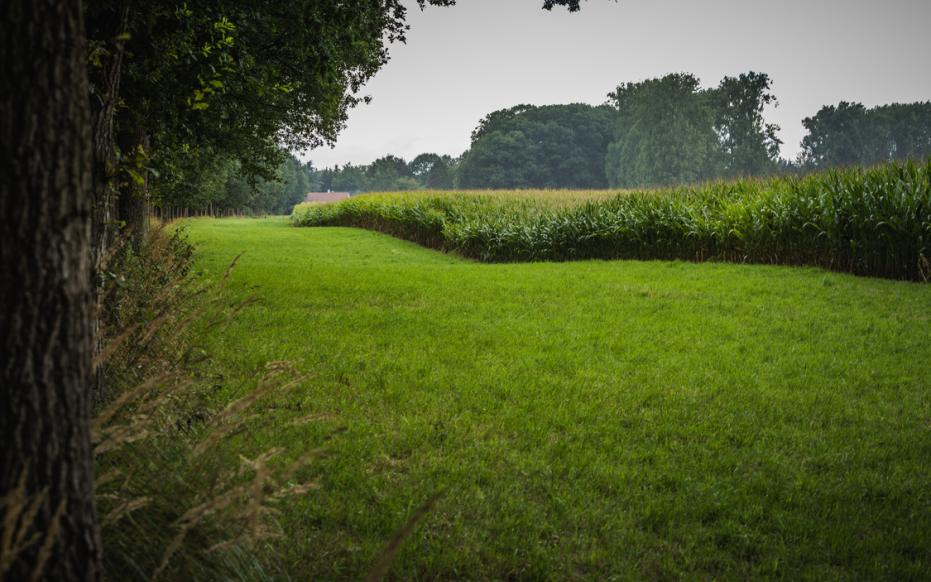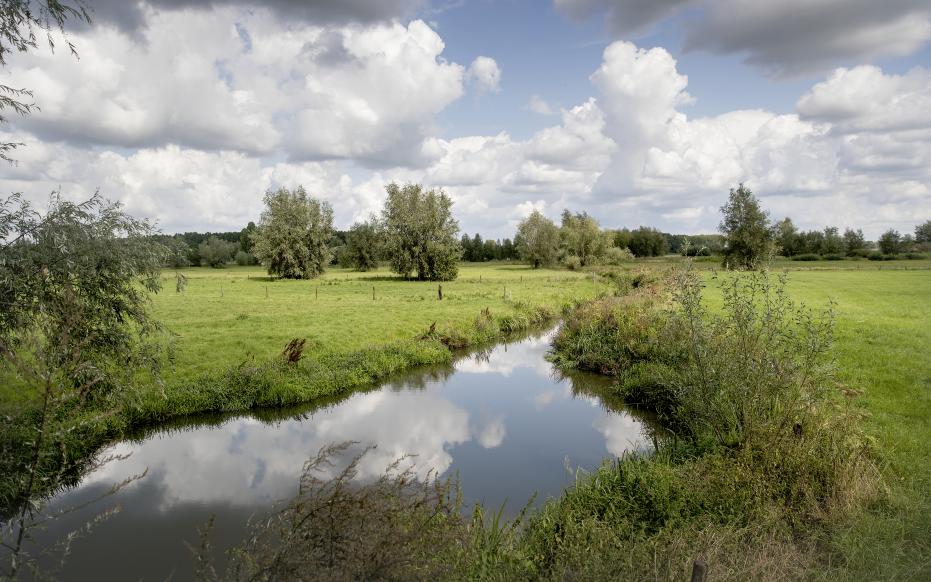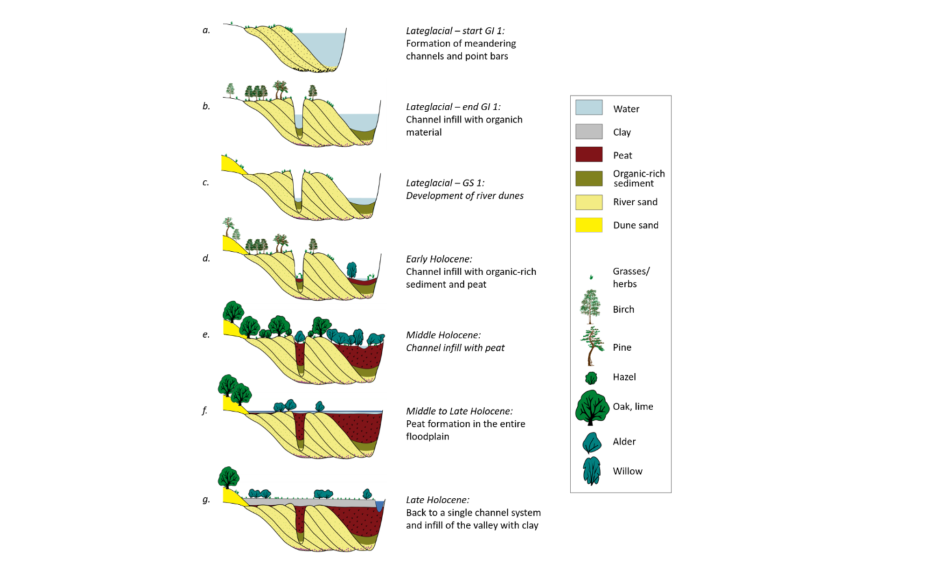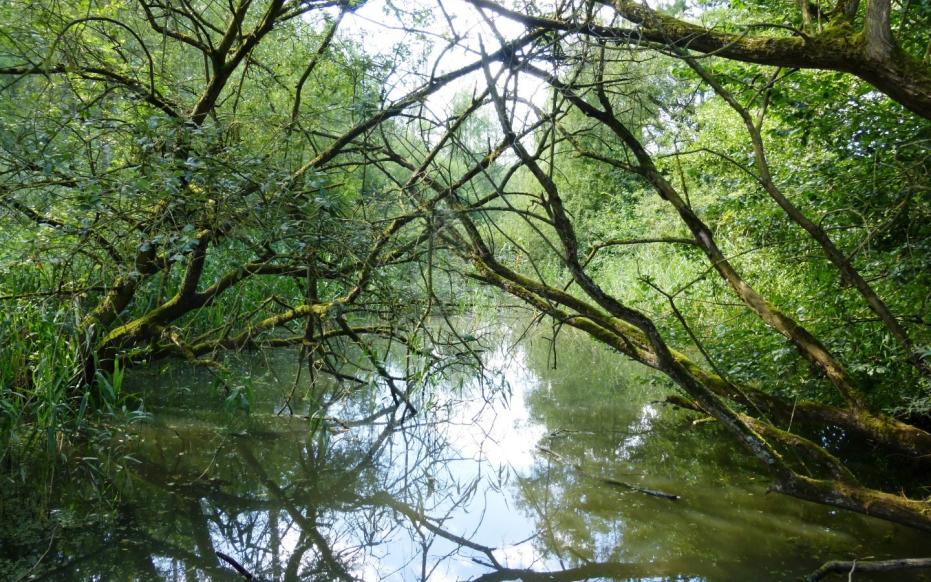Origin of the landscape
During the Late Glacial, cold and warmer phases alternated. At the beginning of this transition period, the Scheldt developed from a braiding river to a meandering stream. The river scoured the outer bends further, moving the channel outward. As the river migrated, sediment was deposited in the inner bends. In addition, meander valley ridges and depressions formed. These ridges were covered by younger sediments, but can still be recognized in the Kalkse Meersen and Overmere Donk in the landscape. Eventually, the river took a shorter course and the loops were cut off. The abandoned meander bend then formed an elongated horseshoe lake. We find such cut-off paleogee channels back the subsoil of Kalkense Meersen, Wijmeersen, Bergenmeersen, Donk and Berlare Broek. Under the influence of forest vegetation and soil stabilization, the migration of the meanders came to an end.
